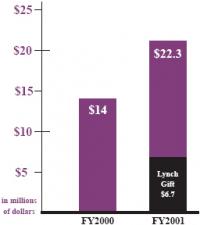International Issue
The Central Asian region has had a long and tumultuous history. For more than 3,000 years this region has been a crossroads for major ethnic migrations and a meeting place of the ancient world’s great civilizations. This region has also been an area of great power rivalries. During the last century, the region was the scene of intense Russo- British competition known as a great game. Historically, all Central Asian states have been used as a staging area during conflicts. Contemporary Central Asian societies are bracing for a new period of instability and experiencing new crises, which are deeper in some aspects than those of previous systems. The breakdown of the previous system has led to many difficulties related to the transformation of totalitarian regimes into democratic societies.
Today the world is justly worried. Afghanistan has become the largest source of drugs and a center of international terrorism. The Taliban, the radical Islamic group that rules much of Afghanistan, controls more than 90 percent of Afghanistan’s poppy fields. They use poppy-derived income to arm, train, and support fundamentalist groups, including the Islamic Movement of Uzbekistan. By some accounts, Osama bin Laden is personally investing in a new liquid heroin called “Tears of Allah.”
Tajik society, on the front line of the anti-trafficking struggle, is already suffering severely from the narcotics scourge. Drug addicts in state institutions increased fourfold between 1996 and 2000, with 74 percent of these reportedly having used heroin. According to some data, dozens of warehouses and laboratories producing high-quality heroin meant for transportation abroad are located along the Afghan–Tajik border. Therefore, Tajikistan is eager to weaken radical groups, to reinvigorate its antitrafficking policy, and to receive greater international assistance.
The necessity of creating a regional security system in Central Asia has been discussed for a very long time, even before the first successes of the Taliban movement and its eventual take-over of power in Afghanistan. Historically, the smuggling of drugs and arms has been the main source of destabilization for the entire Central Asian region; today the terrorist threat has become the source of increased instability.
Afghanistan shares its borders with the three Central Asian states of Tajikistan, Turkmenistan, and Uzbekistan. Approximately 4 million Tajiks, 1.7 million Uzbeks, and half a million Turkmen live in Afghanistan. Among them, Tajikistan has long been regarded both by Russia and the West as the bulwark between Afghanistan and the rest of Central Asia. The U.S. strike against Afghanistan-based terrorism has generated great tension, particularly in Tajikistan. Afghanistan has become over the past nine years the world’s leading producer of poppy paste, heroin’s base product. The 1,300-kilometer border between Tajikistan and Afghanistan offers smugglers the cheapest and most straightforward route into the former Soviet Union and Europe. Many people in Tajikistan are worried that any fighting in neighboring Afghanistan could upset the delicate political balance in Tajikistan, which is still recovering from a civil war. The Tajik peace agreement is still young and many aspects of the transition from crisis to normalcy need ongoing international support. All Central Asian states also are worried about a possible flood of refugees from Afghanistan. They fear the flow of people would increase the flow of drugs, infectious diseases, and extremists into the region.
In fact, the ongoing U.S. attack against the Taliban may very well cause a refugee crisis that could destabilize Tajikistan and other neighboring states. Afghan refugees have gathered on the Panj River at the Tajik border for years. Tajikistan has an extremely limited capacity to cope with refugees and cannot allow Afghan refugees into the country because of the risk that there may be terrorists among them. In addition, the country is still recovering from a five year civil war, and is not in a position to provide shelter and fair living conditions to refugees. The country also is suffering from a drought and cannot take on the responsibility of feeding more people. If Tajikistan refuses to admit these people, the West may be compelled to increase aid.
The U.S. attack against terrorism in Afghanistan may radically reshape the geopolitical balance in Central Asia and may cause the region to unravel. In 1998 the Islamic Movement of Uzbekistan, which has received training and support from the Taliban and bin Laden, threatened to blow up a reservoir in Tajikistan. As a result of the U.S.-led antiterrorism campaign, other reservoirs may become targets now. The Lake Sarez reservoir in Tajikistan has been an object of past terrorist threats. On several occasions during Tajikistan’s 1992–97 civil war, antigovernment military commanders in the United Tajik Opposition threatened to blow up the Usai dam, which holds Lake Sarez’s waters. The collapse of the Usai dam could endanger as many as five million people in Tajikistan, Turkmenistan, and Uzbekistan.
Security concerns are connected with Central Asian states’ participation in the U.S.-led, antiterrorism campaign and the signing of the U.S.–Uzbek joint statement on Oct. 12. Taliban leaders have indicated they will retaliate against Central Asian states that assist in the U.S. war effort. Also, the attack in Afghanistan may destabilize the Central Asian region and the funding base for producing new army commanders in the countryside.
Another danger may be Russia’s reaction to the U.S. presence in Central Asia. For more than a century before the 1991 collapse of the Soviet Union, Central Asia was in Russia’s sphere of influence, and today the Russian public is wary of the U.S. presence in Central Asia. Such a level of opposition raises the possibility of future diplomatic confrontation between Russia and the United States over Central Asia.
GMU Gifts Set Record

Reprinted from the Fairfax Extra Contributors gave a record $22.3 million to George Mason University in the last fiscal year. This represented a 59-percent increase over the previous year, school officials said.
The largest gift and the biggest contribution from an individual or couple in George Mason’s history was $6.7 million in property and money from Edwin and Helen Lynch of Mason Neck, longtime friends of the school. The Lynches’ home, known as Point of View, and 39 acres are valued at $4.2 million.
The additional $2.5 million includes seed money for the construction and maintenance of the Center for Conflict Analysis and Resolution. Gifts for the fiscal year that ended June 30 increased across all major categories, including alumni, friends, faculty and staff, and corporations and foundations, university officials said.



